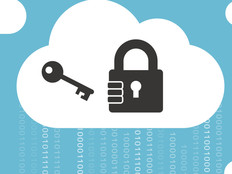Microsoft Donating $1 Billion in Cloud Services to Nonprofits
Microsoft intends to give away $1 billion worth of cloud services to nonprofits and university researchers over the next three years. The software behemoth says its overarching goal of the three-part initiative is to ensure that “the cloud can serve the public good in the broadest sense by providing additional cloud resources to nonprofits, increasing access for university researchers and helping solve last-mile Internet-access challenges.”
In a blog post on Tuesday, Microsoft CEO Satya Nadella explains that he is focused on one key question: “How can we make it easier for governments and NGOs to use the public cloud for public good?” And in a separate post that day, Brad Smith, the company’s president and chief legal officer, says that Microsoft expects to provide cloud services to 70,000 nonprofits over the next three years.
Nadella points out in his post the significant advantages of using the cloud: “The ‘public cloud’ refers to massive, privacy-protected data and storage services rendered over a network for public use. Cloud computing makes it possible to reason over quantities of data to produce specific insights and intelligence. It converts guesswork and speculation into predictive and analytical power.”
He continues: “Among the questions being asked in Davos are these: If cloud computing is one of the most important transformations of our time, how do we ensure that its benefits are universally accessible? What if only wealthy societies have access to the data, intelligence, analytics and insights that come from the power of mobile and cloud computing?”
Nadella formally announced the plan on today at the World Economic Forum, in Davos, Switzerland, an annual gathering of political and business leaders. He also discussed it in an op-ed in The Financial Times (subscription required).
A Cloud and Connectivity Push
“Cloud computing has emerged as a vital resource for addressing the world’s problems,” Smith writes. “Cloud services can unlock the secrets held by data in ways that create new insights and lead to breakthroughs, not just for science and technology, but for addressing the full range of economic and social challenges and the delivery of better human services. They can also improve communications and problem-solving and can help organizations work in a more productive and efficient manner.”
The cloud-services initiative, which is the product of Microsoft Philanthropies, a new arm of the company established in December, has three components.
The first part will provide cloud services, including Microsoft Azure, to nonprofits around the globe, so that nongovernmental organizations can access Microsoft’s data centers, create and run their own applications, and tap into the company’s computing and storage capabilities.
Other Microsoft services that will be provided are Enterprise Mobility Suite, for managing devices, applications and data; CRM Online, for managing relationships with donors and beneficiaries; and Power BI, for business intelligence and data analytics.
Secondly, Microsoft will offer cloud services to faculty researchers at universities. According to Smith, the company “will significantly expand our Microsoft Azure for Research program, which grants free Azure storage and computing resources to help faculty accelerate their research.” So far, that program “has provided free cloud computing resources for over 600 research projects on six continents. We will build on what works and will expand our donations program by 50 percent, with a focus on reaching important new research initiatives around the world.”
The third part of the initiative, Smith says, will aim to reach new communities “with last-mile connectivity and cloud services.” Microsoft hopes to use TV White Spaces wireless technology, which takes advantage of spectrum in between TV channels, to expand low-cost broadband connectivity.
The launch of the full program will begin in the spring. “We’ve been providing Office 365 services to nonprofits the past two years, and we will apply to this new and broader effort everything we have learned from this experience,” Smith reveals in his post. “We expect that in 2016 alone we’ll donate to nonprofits through these offerings cloud services with a fair market value of close to $350 million.”
Ultimately, Smith says, Microsoft wants to “to ensure that cloud services are easily accessible to nonprofit organizations, faculty researchers in universities and people who today lack affordable broadband access.”
As Smith explains, Microsoft is going to expand its investment in the technology and combine it “with cloud services donations and community training programs that we’ll pursue in partnerships with local governments and nonprofit groups. By combining connectivity with cloud services and training focusing on new public-private partnerships, we are setting a goal of pursuing and supporting at least 20 of these projects in at least 15 countries around the world by the end of 2017.”
Examples of Cloud in the Nonprofit World
In his Financial Times op-ed, Nadella cites examples of how the cloud is already benefiting nonprofits. “Thanks to a mobile-first and cloud-first company, M-Kopa, Kenyans living on less than $2 a day can have access to low-cost solar lighting,” he says. “An innovative mobile phone payment system enables the poor living in slums to make daily payments of 40 U.S. cents for solar light.
“The University of the Aegean in Greece, using cloud data, is working with fire fighters to predict and prevent wildfires like the one in 2007 that killed 84 people. In Sweden researchers are using cloud technologies to ensure that children are screened earlier and more accurately for dyslexia.”
In Tuesday’s blog post, Nadella mentions that in India “the LV Prasad Eye Institute has treated 20 million patients with cataracts, a leading cause of preventable blindness. Through digitization of medical records and other socioeconomic data, doctors now can pinpoint the procedures needed to prevent and treat visual impairments.”
Nadella concludes by observing, “Philanthropy is a start, but to truly harness the public cloud for public good, businesses, governments and NGOs must come together with a shared vision and relentless passion to improve the human condition and drive new growth equally.”









